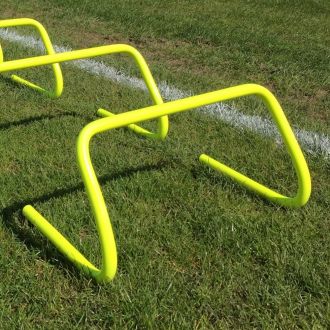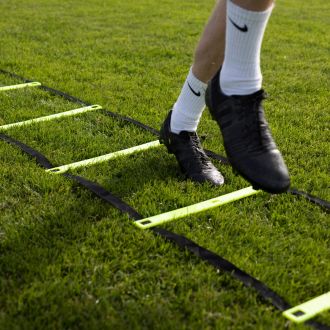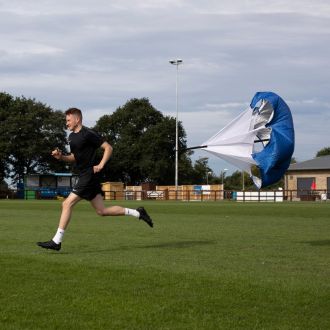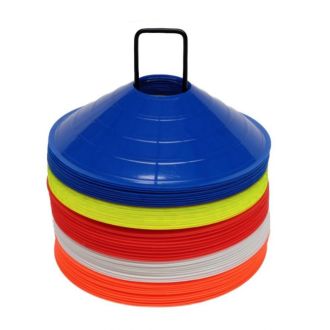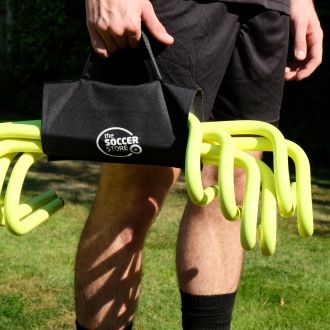How to Warm Down Effectively After a Football Match
Some physios say that warming down after a football match is actually more important than warming up beforehand. The idea of a warm-down session is to allow the body to gradually revert to normal after being in full exercise mode. If done correctly, warming down exercises can minimise muscle stiffness and tiredness the next day - reducing the chances of injury.
Warming down helps the body’s natural process of removing waste from the muscles, including the removal of lactic acid. There is also evidence to suggest that warming down thoroughly after periods of intense exercise helps to cool the body down, slow the heart rate and normalise blood pressure gradually.
If you’re playing and training during the infamous British winter this year, you should take at least 10 minutes after every session to warm down properly. For the best results, make sure you perform these exercise within 30 minutes of your match or training session.
Run
The best way to start a warm-down is with a relatively fast run, which should be gradually slowed until you’re walking at your normal pace. Reducing your pace in this way will allow your heart rate to slow gradually. Simply ceasing strenuous exercise can actually make your heart work harder for a short period. A sudden cessation of rigorous activity can also lead to blood pooling in the legs, a sudden drop in blood pressure and dizziness
Stretch
Once your heart rate has slowed to something near its normal level, you should immediately start some stretching exercises. You will need to pay particular attention to the muscles that get the biggest workouts during training or match action, including your hamstrings, calves and lower back. A lot of physios will get professional players to warm down with different forms of calisthenic exercise, such as alternate toe touches and air cycling.
Warm down exercises
Skipping - Skip whilst moving forward and swinging your arms forward (in circular motions) for about 20 metres, and then skip back to your starting position with your arms swinging backwards. You can see professional footballers complete this during both warm-up and warm-down sessions.
High knee jogging - Whilst jogging, stop on the spot for about 10 seconds and begin to perform kees up, so that your thigh reaches a 90-degree angle with your body.
Torso twists - Whilst jogging, stop on the spot and perform 15 seconds worth of rapid torso twists from side to side. Make sure you maintain a steady rhythm and keep your arms completely loose.
Hamstring stretches - Start with your feet a shoulder’s width apart. Interlace your fingers behind your back, and slowly bend forwards whilst keeping your legs straight. Try to tuck your chin in as near to your knees as you can, and bring your hands above your back. Hold this for two or three seconds, and then slowly return to your starting position.
Calf stretches - Find a wall or a teammate to lean on, and then stand at arm’s distance. Lunge forward with your left leg, so it is slightly bent, and stretch your right leg behind you (keeping it straight). Your right heel should be pressed into the ground. Hold this stance for around 20 seconds, and then switch legs. Repeat this five times to give your calves a great warm-down.
Quad stretches - Start with your feet three or four inches apart, and bring your left leg behind you - taking hold of it with your left hand. Keeping your back straight, gently pull your foot into your gluteal muscles. Slowly return your left foot to the ground, and repeat the exercise with your right foot.
Lower back stretches - Lie on your back with the soles of your feet on the floor and your knees bent. Very slowly lower both knees to the right while keeping the rest of your body perfectly still. With your right hand, gently pull your things towards the ground, and stretch your left arm out behind you. You should feel a stretch through your side and lower back. Then simply swap sides and repeat the exercise from scratch.
Warming down after every match and training session is essential during a busy season, as it keeps you supple and free from stiffness the day after exercise. Performing these warm-down routines after every session should help you to be in the best possible shape when match days arrive.


